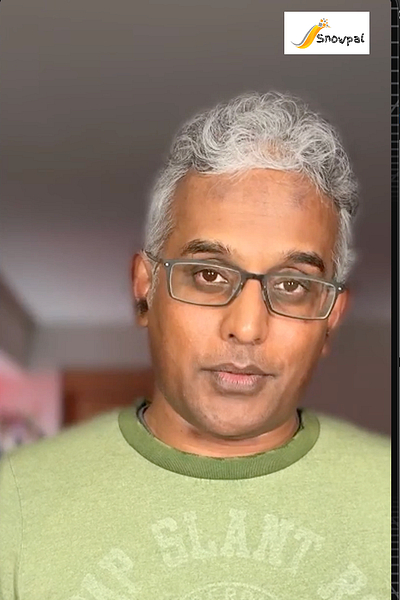The Hidden Cost of Young Adults’ Debt
People are taking on huge amounts of debt—especially student loans and pricey cars—often without understanding the long-term impact. Many regret it and expect to spend years paying it off.
In this podcast, Krish Palaniappan discusses the alarming levels of debt among young adults, particularly focusing on student loans and car loans. He reflects on the financial decisions made by this demographic, often influenced by societal expectations regarding education and career paths. The conversation emphasizes the importance of financial awareness and making informed decisions about borrowing, especially in relation to education and lifestyle choices. Krish advocates for a more cautious approach to debt and encourages listeners to consider the long-term implications of their financial choices.
Takeaways
Many young adults are burdened with significant debt, often in the hundreds of thousands.
The societal pressure to obtain college degrees can lead to poor financial decisions.
Financial literacy is crucial for young adults to navigate their financial futures.
Borrowing for depreciating assets like cars can lead to long-term financial strain.
Education does not always equate to job readiness or financial success.
Many graduates struggle to find jobs that match their degrees, leading to increased debt.
It’s important to weigh the costs and benefits of college education carefully.
Young adults should consider alternative paths to education that may be more financially viable.
Financial decisions made early in life can have lasting impacts on future opportunities.
Awareness of financial implications is essential for making informed choices.
Podcast
Summary
1. Intro & Why This Topic Came Up
Explains that this episode was triggered by Instagram videos where creators ask strangers how much debt they have.
Notes how algorithms keep surfacing similar videos once you watch one.
2. Shocking Levels of Personal Debt
Krish expected answers like $5K–$20K, but many people reported hundreds of thousands in debt.
One example: a 29-year-old woman and her husband had close to $1M in non-mortgage debt (two expensive cars + student loans).
Student loans and car loans show up as the biggest items, with mortgages often excluded from these conversations.
3. Emotional Impact & Long Payback Periods
Many young adults interviewed either didn’t know when they’d pay off their debt or estimated 10–15+ years.
Krish finds this “shocking” and “appalling,” especially given how early they are in their adult lives.
Points out that for years they’ll largely be working just to service debt (cars, credit cards, student loans).
4. College Degrees: Value vs. Cost
Krish has multiple college diplomas but questions how much he actually needed them in hindsight.
Notes the paradox: many people who call college “a scam” still have degrees themselves.
Acknowledges cultural pressure: people “have to” go to college because that’s the default path.
Even where job postings say degrees aren’t required, he suspects many employers still quietly prefer them.
5. Mismatch Between Degrees and Job Market
Many interviewees studied fields like languages, social studies, certain cultural studies, or general business administration.
Krish emphasizes: interests are valid, but the key question is whether there are enough jobs that pay bills in those fields.
Example: a woman with a degree in “Mexican culture” who has been searching but struggling to find related work.
When there’s no job to match the degree, loans grow because no income is coming in to pay them down.
6. Deferment, Interest, and Financial Awareness
Mentions ideas like loan deferment for student loans and wonders if interest continues accruing (likely yes).
Many borrowers are young in terms of financial literacy, not fully aware of what they’re signing up for.
Debt often includes more than just school and cars: some borrow to travel and fund lifestyle expenses.
7. Rethinking How (and Where) You Study
Suggests: if you feel you must get a degree, look for cheaper, more efficient paths.
Less expensive schools
Closer to home
Shorter programs where possible (e.g., 3-year degrees in some countries vs 4-year U.S. norm).
Recommends spending the least you reasonably can on the diploma and learning outside or despite college, since curricula can be dated.
Argues many graduates are not truly workforce-ready even after finishing college.
8. Alternative Paths & Opportunity Cost
Contrasts a 4-year business degree (2025–2029) with a friend doing vocational training or self-directed learning over the same period.
Predicts that the hands-on learner may be in better shape in 2029, despite not having a diploma.
Encourages people to choose paths that actually help them get work, start a business, and enjoy what they learn.
9. AI, Fewer Jobs, and the Need to Stand Out
From his experience running a startup, Krish sees many new grads underprepared for real work.
With AI enabling fewer people to do more, he expects fewer jobs in the near term, at least temporarily.
Because of that, you need to be better prepared than the person next to you to secure a job.
10. Borrowing for Cars, Travel, and Lifestyle
Advocates buying a cheap car until you can truly afford a nicer one.
Says borrowing $70K for a car with only $5K down is extremely risky, even if dealerships are happy to approve you.
Strongly discourages borrowing to travel; suggests a nice dinner instead of a $7K international trip funded by debt.
Views home loans differently because a house can appreciate, while cars always depreciate.
11. College Loans as a “Gray Area”
College degrees are more nuanced: you may genuinely want the diploma but dislike the debt.
Encourages weighing options carefully: cost of degree vs. its real impact on employability and income.
12. Final Warning & Takeaway
Many people interviewed regret their debt and feel it’s “too late” to undo those decisions.
Cars lose ~20% of value as soon as you drive off the lot, and you’d likely get far less if you tried to resell quickly.
Krish’s core message:
Be extremely careful about what you borrow for in your early years (and later too).
It’s far better to avoid bad debt than to dig yourself out of it for decades.


